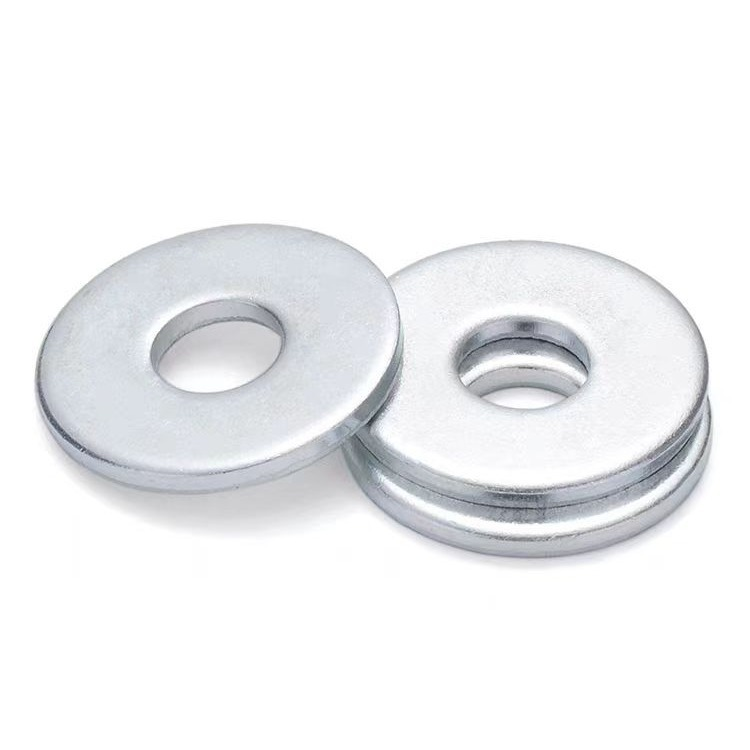Understanding the Fundamental Role of Plain Washers in Modern Engineering
In the world of fasteners and engineering components, plain washers serve as essential elements that significantly enhance the performance and reliability of bolted connections. These simple yet crucial components distribute load, prevent surface damage, and ensure proper assembly across countless industrial applications. Whether you're working on heavy machinery, construction projects, or precision equipment, selecting the right plain washer size is fundamental to achieving optimal results.
The versatility of plain washers extends beyond their basic function as load-spreading devices. They act as spacing elements, help prevent corrosion, and contribute to the overall integrity of mechanical assemblies. Understanding their specifications and proper application is crucial for engineers, maintenance professionals, and anyone involved in mechanical assembly operations.
Essential Plain Washer Dimensions and Materials
Standard Dimensional Specifications
Plain washer dimensions follow strict industry standards, with the most common specifications being the inner diameter, outer diameter, and thickness. The inner diameter must precisely match the fastener size, while the outer diameter ensures adequate load distribution. For instance, a standard plain washer for an M10 bolt typically has an inner diameter of 10.5mm and an outer diameter of 20mm.
Thickness variations play a crucial role in load-bearing capacity and application suitability. Standard thicknesses range from 0.5mm to several millimeters, depending on the intended use and load requirements. Engineers must carefully consider these dimensions when selecting plain washers for specific applications.
Material Selection and Properties
The choice of material for plain washers significantly impacts their performance and durability. Stainless steel washers offer excellent corrosion resistance and strength, making them ideal for outdoor and marine applications. Carbon steel variants, often zinc-plated or phosphated, provide good mechanical properties at a more economical price point.
Other materials include brass, which offers good electrical conductivity and corrosion resistance, and nylon or plastic washers that provide electrical isolation and chemical resistance. Each material choice brings specific advantages and limitations that must align with application requirements.
Industry Standards and Classification Systems
International Standards Compliance
Plain washer specifications are governed by various international standards, including ISO 7089, DIN 125, and ANSI/ASME B18.22.1. These standards ensure consistency in manufacturing and interchangeability across different suppliers and regions. Compliance with these standards is crucial for quality assurance and proper mechanical assembly.
The ISO system, widely adopted globally, provides comprehensive guidelines for plain washer dimensions, tolerances, and material properties. This standardization enables seamless integration in international projects and maintains consistency in engineering practices.
Grade Classifications and Load Ratings
Plain washers are classified into different grades based on their mechanical properties and intended use. Commercial grade washers suit general applications, while structural grades meet more demanding requirements. Understanding these classifications helps in selecting appropriate washers for specific load conditions and safety requirements.
Load ratings vary significantly based on material properties and dimensional specifications. High-strength applications may require hardened plain washers that can withstand greater compressive forces without deformation. Engineers must consider these ratings when designing mechanical assemblies.
Application-Specific Considerations
Environmental Factors
The operating environment significantly influences plain washer selection. Exposure to moisture, chemicals, or extreme temperatures requires specific material choices and surface treatments. For instance, marine environments demand corrosion-resistant materials like stainless steel or specialized coatings.
Temperature considerations are particularly important, as different materials exhibit varying thermal expansion properties. This becomes crucial in applications where temperature fluctuations could affect joint integrity or where thermal cycling is common.
Load Distribution Requirements
Proper load distribution is fundamental to the function of plain washers. The washer's surface area must adequately spread the clamping force to prevent damage to joined materials. This becomes especially critical when working with soft materials or when high torque values are involved.
Engineers must consider both static and dynamic loading conditions when selecting plain washer sizes. Vibration, cyclic loading, and shock loads may require additional design considerations or specialized washer types to maintain joint integrity over time.
Frequently Asked Questions
How do I determine the correct plain washer size for my application?
Select a plain washer with an inner diameter slightly larger than the bolt diameter (typically 0.5-1mm larger). The outer diameter should be approximately twice the inner diameter to ensure proper load distribution. Consider the material thickness based on your load requirements and application specifications.
What are the most common materials used for plain washers?
The most widely used materials include stainless steel, carbon steel (often zinc-plated), brass, and various plastics. The choice depends on factors such as corrosion resistance requirements, load-bearing needs, and environmental conditions.
Can plain washers be reused after disassembly?
While plain washers can technically be reused, it's generally recommended to replace them during reassembly, especially in critical applications. Wear, deformation, or damage may not be visible but could compromise the joint's integrity. Always inspect washers thoroughly if considering reuse.

